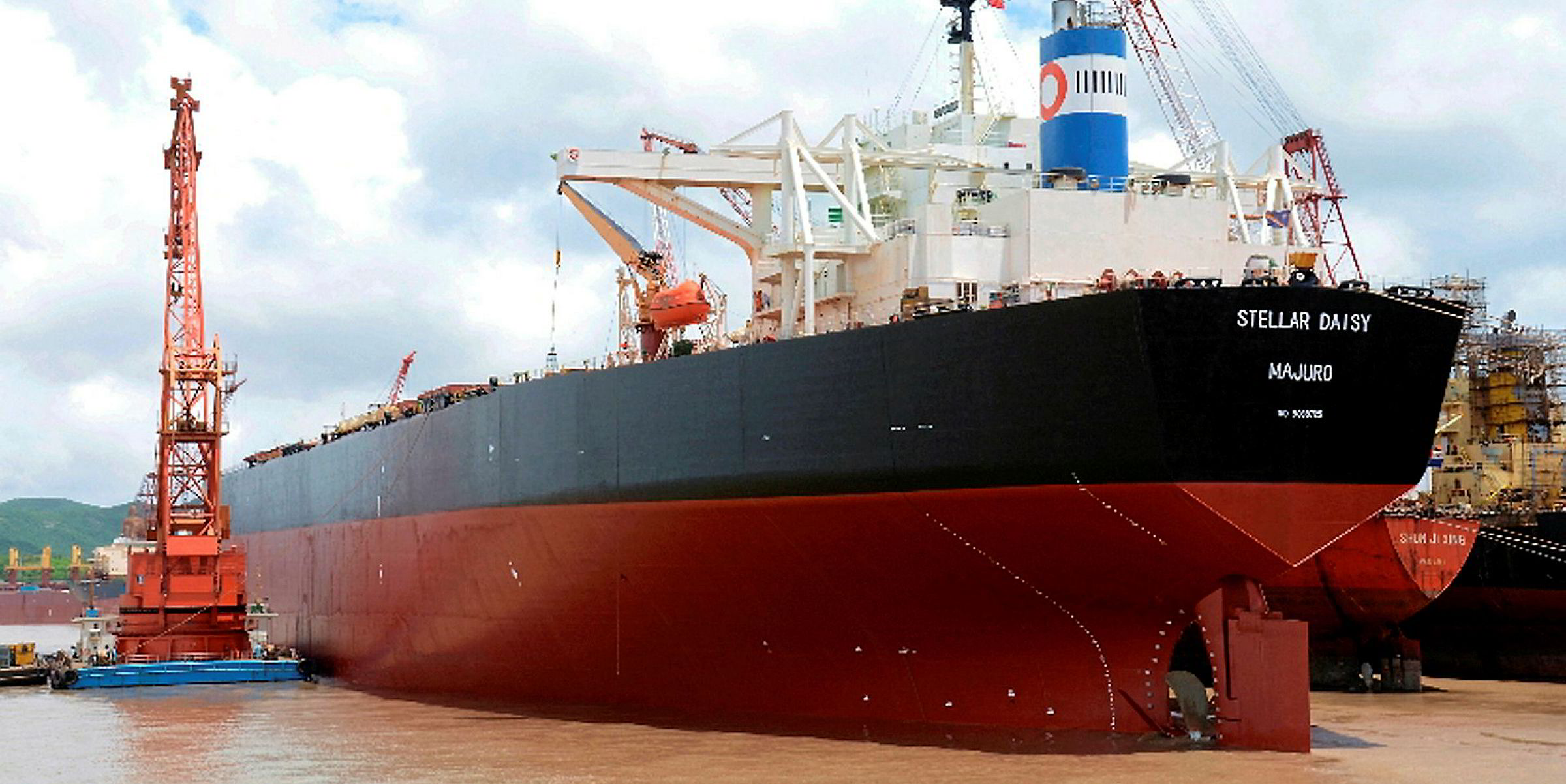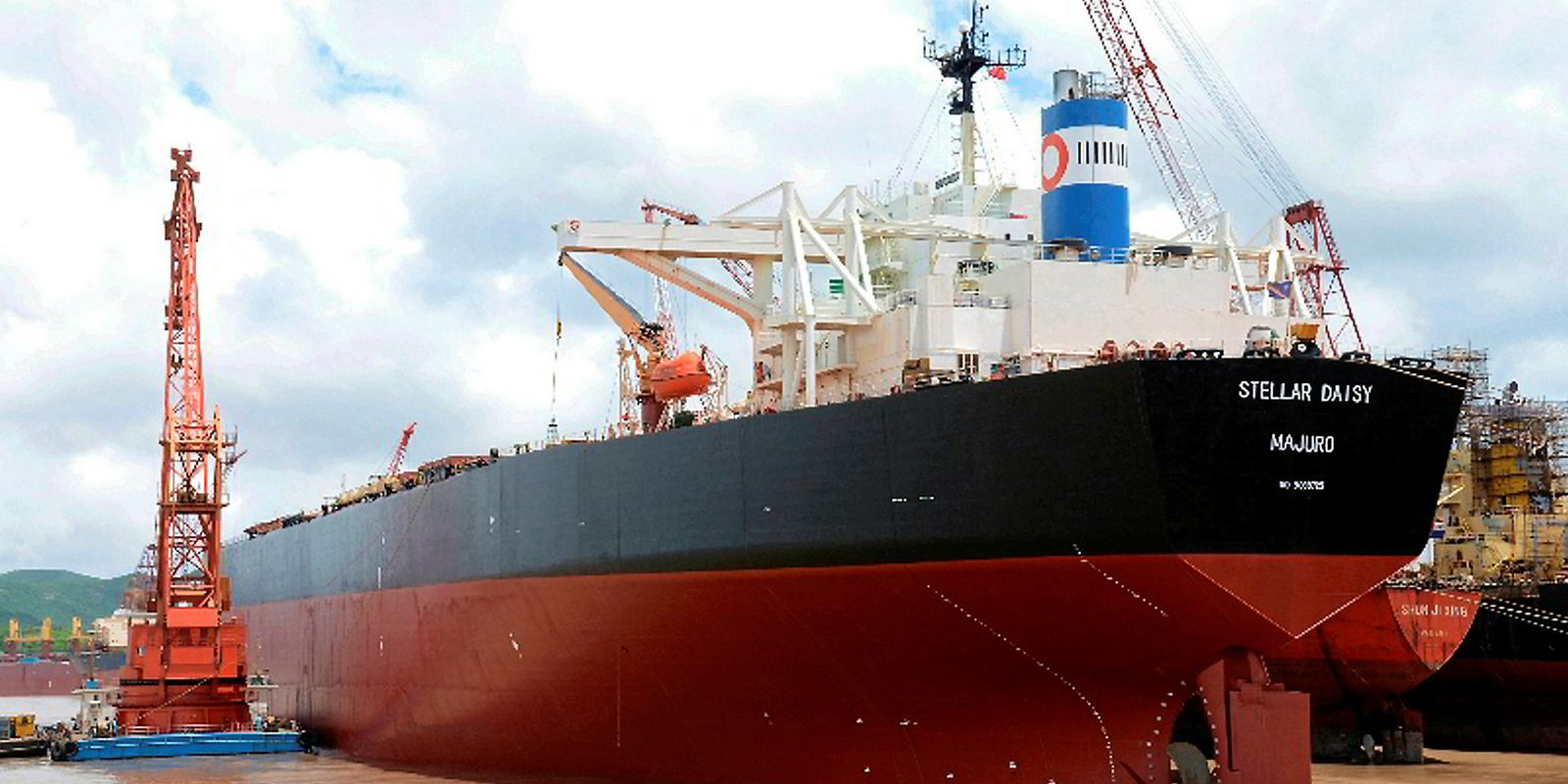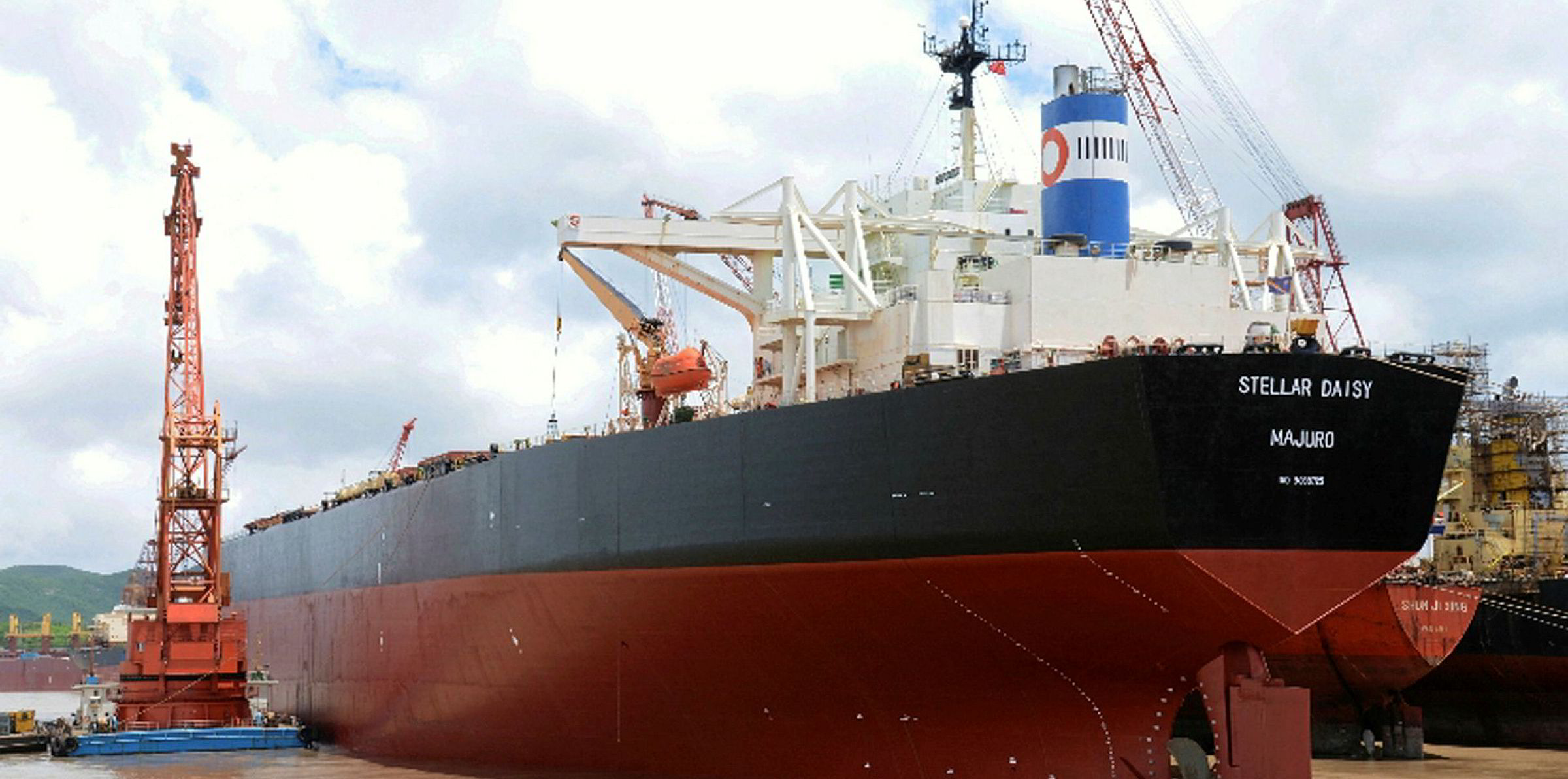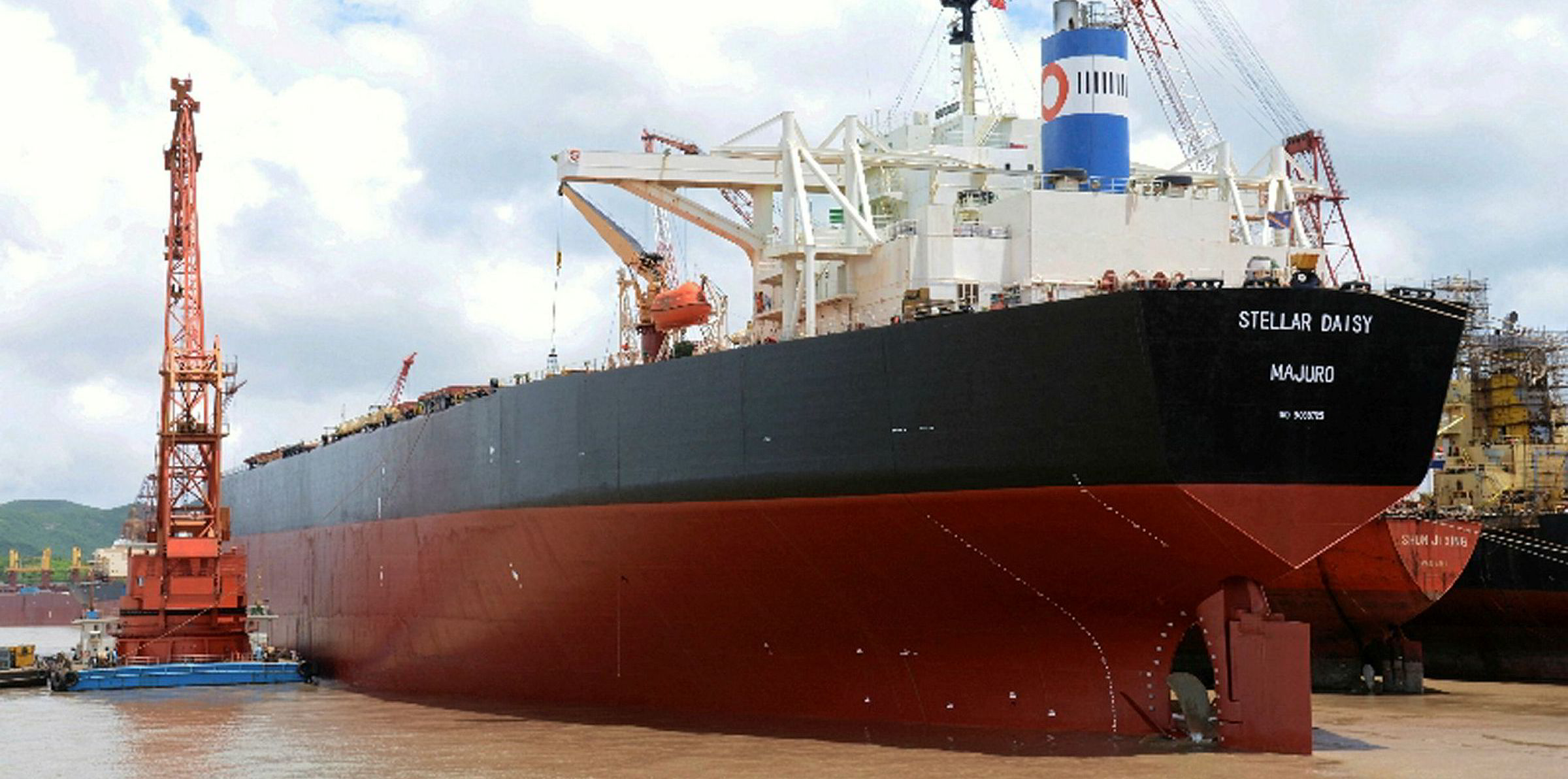Accident investigators have urged Marshall Islands authorities to call on the IMO to close a critical loophole in the International Convention for the Safety of Life at Sea (Solas) following an investigation into the loss of the Stellar Daisy.
The call is made in the accident report of the ship’s flag state, published this week, on the catastrophic structural failure of the converted VLOC that claimed 22 lives in the Atlantic off Uruguay on 31 March 2017, as it sailed from Brazil to China.
The report highlights the exclusion — for technical reasons — of VLCC-to-VLOC conversions such as the 266,000-dwt Stellar Daisy (built 1993) from the Solas Chapter XII additional safety requirement for bulkers over 150 metres.
The requirement stipulates that in a loaded and unloaded condition such bulkers should “have sufficient strength to withstand flooding of any space, or spaces, located between adjacent transverse bulkheads”.
Because of the Stellar Daisy’s technical dimensions, only its number one cargo hold had to comply with this Solas regulation to survive a flooded condition.
The regulation is important because the Stellar Daisy could not survive the initial flooding on the day it went down.
There was high potential for fatigue cracks to develop to the longitudinals and brackets as the hull worked the sea conditions that were encountered
Marshall Islands report
It suffered structural failure that caused rapid flooding of the number two and then number three port wing ballast tanks (WBTs), the accident investigation revealed.
That led to progressive flooding of the cargo holds that within minutes put the ship into a 45-degree list from which it could not recover.
The Marshall Islands told TradeWinds it is now preparing a submission to the IMO's Maritime Safety Committee in line with recommendations.
The need to include conversions in the international convention was highlighted by a long list of structural problems identified in the Stellar Daisy and other similar ageing VLCC-to-VLOC conversions in the Marshall Islands report.
The investigation puts the Stellar Daisy’s structural failure down to the loss of structural strength over time due to material fatigue and corrosion.
“There was high potential for fatigue cracks to develop to the longitudinals and brackets as the hull worked the sea conditions that were encountered between 29 to 31 March,” the report said.
Its description of the sinking proved how fatigue cracks could be catastrophic for conversions.
“The flooding of number two port WBT likely was the result of one or more cracks in bottom longitudinals that either were not detected when the tank was last inspected in October 2016 or that developed after the inspection,” it added.
“As the crack, or cracks, grew, the pressure on the bottom shell as the ship rolled under the influence of the high GM0 [metacentric height] would have imposed additional stresses on the hull structure that could cause latent cracks in other bottom longitudinals to grow or for a fatigued bottom longitudinal to fail.
Uncontrollable flooding
“As a result, the size of the crack would likely increase and potentially lead to a loss of shell plate and cause massive, uncontrollable flooding.”
The report identified other areas of concern for the converted fleet, which could raise questions over the safety of the trading fleet of close to 50 ships.
These concerns include the vulnerability of old steel to cracking.
The Stellar Daisy, built as a VLCC designed to operate for 20 years, sank at the age of 23. Most of the cracking found in the converted VLOC was in areas of old steel.
Following the disaster, classification society the Korean Register of Shipping conducted inspections of 18 VLOC conversions in the Polaris Shipping fleet, while the Marshall Islands inspected 11 ships operating under its own flag.
Investigators, in compiling the report, identified 58 cracks in the bottom longitudinals and 73 cracks in the side shell longitudinals of the Stellar Daisy and other converted VLOCs managed by Polaris and classed by the Korean Register.
These included a crack in the side shell plating of the 279,000-dwt Stellar Unicorn (built 1993), which has since been demolished.
The flag-state inspection of its converted fleet found areas of fatigue in “most ships”. It described under-deck areas as “high risk” on all ships it inspected.
Coatings were not in line with the International Association of Classification Societies (IACS) guidance. Shipyard and voyage repairs were made without a structural plan and did not comply with IACS standards on the length of inserts.






